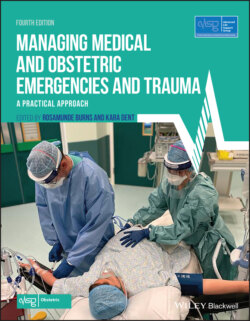Читать книгу Managing Medical and Obstetric Emergencies and Trauma - Группа авторов - Страница 108
Anaphylaxis
ОглавлениеAnaphylaxis is a severe, life‐threatening, generalised, systemic hypersensitivity reaction to a trigger agent in which histamine, serotonin and other vasoactive substances are released. Anaphylactic reactions usually begin within 5–10 minutes of exposure to the trigger and the full reaction usually evolves within 30 minutes.
If anaphylaxis is suspected, samples for serial serum tryptase estimations should be taken. The enzyme tryptase is released from mast cells and it parallels histamine release. Peak concentrations well above 20 ng/ml indicate a true anaphylaxis/anaphylactic reaction. The peak value occurs anywhere between 30 minutes and 6 hours after exposure. Samples must be taken at the time of the acute event when the patient is stable, 1–2 hours later and a further sample at >24 hours.
Later investigation, after the acute event, involves skin testing to identify the presence of specific immunoglobulin E (IgE) antibodies. The value of skin tests, and especially the prick test, has been shown in extensive studies.
There are estimated to be 500 severe reactions in the UK each year. The estimated obstetric perioperative incidence of life‐threatening allergic reactions is 3.4 per 100 000 anaesthetics (from the Royal College of Anaesthetists National Audit 6 published in 2017 (Kemp et al., 2017) or 1.2 per 100 000 maternities. This is significantly lower than the incidence in non‐obstetric adult cases of 1 in 10 000 anaesthetics. The most frequent trigger agents perioperatively were antibiotics, neuromuscular blocking agents, chlorhexidine and patent blue dye. Anaphylaxis presented within 10 minutes of exposure to the triggering agent in 83% of cases; chlorhexidine and Patent Blue dye cases were slower to present. Hypotension was the presenting feature in 46% of the anaphylaxis cases and occurred during the reaction in all cases. Bronchospasm occurred in 49%. Urticaria and flushing were uncommon presenting features and skin signs were uncommon in the more severe reactions, sometimes only occurring after resuscitation. When the obstetric cases were examined the majority of patients were awake at the time of the reaction and complained of ‘feeling unwell’ before the onset of hypotension. Recognition of a critical event was prompt but recognition of anaphylaxis and starting anaphylaxis‐specific treatment was slower than in non‐obstetric cases. The report comments that this may have been because of the wider differential diagnosis for hypotension in the obstetric setting and that anaphylaxis was low on the list. Adrenaline was administered notably less often than in non‐obstetric settings, which may have reflected the availability of phenylephrine in the obstetric setting. Maternal and neonatal outcomes were good however and there were no cardiac arrests.
